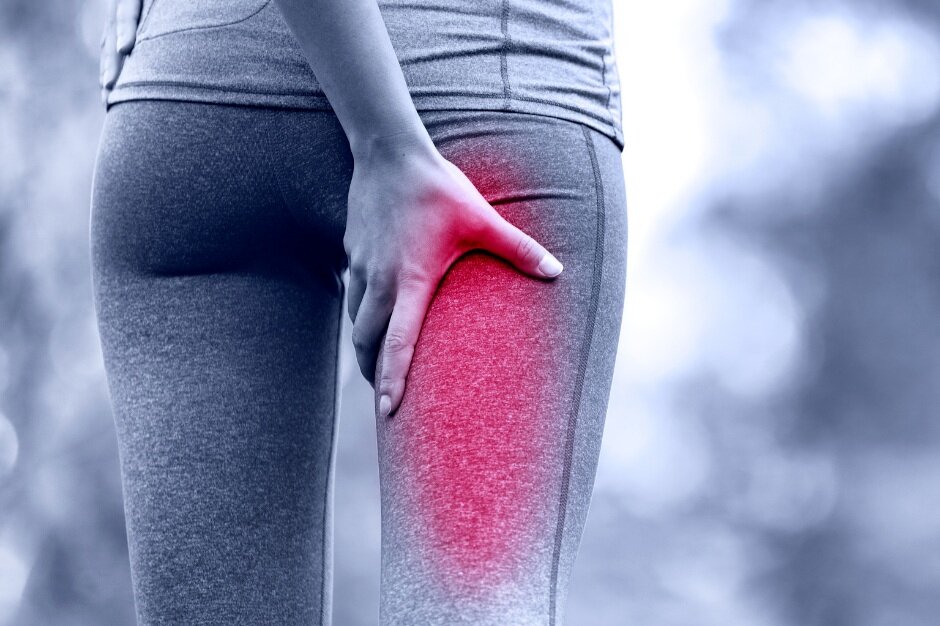Physical Therapy Treatment for Hamstring Strain Injuries
Hamstring strain injuries are common musculoskeletal injuries among athletes of all levels, resulting when one or more of the three hamstring muscles or tendons are strained or torn. The hamstring muscle group is critical for lower body movement and allows for straightening of the hip and bending of the knee. Hamstring strain injuries occur at high rates in sports that require running, sprinting, and rapid changes in direction. Physical therapy plays a critical role in properly rehabilitating hamstring strain injuries and preventing an acute hamstring strain injury from becoming chronic through a structured therapeutic exercise program to restore muscle control, strength, range of motion, and balance.
What is the Hamstring Muscle Group?
The hamstring muscle group is made up of three muscles that extend along the back of the thigh, connecting the pelvis to the leg. These three muscles—the semitendinosus, semimembranosus, and biceps femoris—are responsible for straightening and extending the hip and bending and flexing the knee. The hamstring muscles play a critical role in the movement of the lower body, contracting each time you step, climb stairs, or get in and out of a chair.
Types of Hamstring Strain Injuries
Hamstring strain injuries occur at high rates in sports that require running, sprinting, and rapid changes in direction, accounting for 12 to 16% of injuries in athletes. It is a common injury in athletes who do high-speed sprinting, repetitive kicking, and explosive movement with acceleration and rapid changes in direction, particularly in sports like track, football, soccer, baseball, and rugby. Injury often results from sudden, excessive stress on the hamstring muscles or when rapidly changing from deceleration to acceleration as the hamstring muscles are contracting.
Symptoms of a hamstring strain injury:
Sudden, sharp pain in the back of the thigh or buttocks
Feeling of pop or tearing in the muscle
Bruising hours or days after injury
Tenderness to touch in the affected area
A substantial decrease in the strength and flexibility of the muscle group
Difficulty sitting comfortably, lifting leg when lying down, or straightening the knee
Difficulty walking or running
Hamstring strain injuries are classified into three grades based on pain, weakness, and loss of motion: grade I (mild strain with minimal tearing that feels like a pulled muscle), grade II (moderate strain with partial tearing and a burning sensation at the back of the thigh), and grade III (severe complete muscle tear). Once a hamstring muscle is torn, the individual is significantly more likely to have a subsequent hamstring injury. One in three hamstring injuries reoccurs within the first year following return to sport, making proper rehabilitation imperative to prevent reinjury.
There are several risk factors that contribute to hamstring strain injury, including hamstring weakness, fatigue, lack of flexibility, imbalance of strength between the hamstrings and quadriceps, deficits in strength and coordination of pelvic and trunk muscles, poor core stability, lack of proper warm-up prior to activity, and poor lumbar posture.
Physical Therapy for Hamstring Strain Injuries
Physical therapists play a key role in rehabilitating a hamstring strain injury for a safe return to sport. Proper rehabilitation prevents acute injury from becoming chronic. Initially, the physical therapist performs an evaluation to assess for pain level, bruising and tenderness to touch, activities that aggravate pain, range of motion and muscle strength tests, and gait analysis.
The physical therapist first addresses pain and swelling during the acute phase of the injury. Once the acute phase has passed, the physical therapist prescribes a structured therapeutic exercise program that includes muscle strengthening and range of motion exercises. The physical therapist guides the patient through a gradual rehabilitation program to restore muscle control and balance with specific targeting of muscle strength balance between the quadriceps and hamstrings. Once the patient has achieved sufficient muscle strength, balance, and range of motion, the patient is progressed to functional training and sport-specific drills including unexpected shifts in direction to improve the hamstring muscles’ strength and stability.
Physical therapy treatment for hamstring strain injuries includes:
Manual therapy involving gentle mobilization of muscles and joints to improve motion, flexibility, and strength
Exercise therapy:
Range of motion exercises to improve flexibility
Muscle-strengthening exercises to improve muscle weaknesses and imbalances
Agility exercises to simulate changes in direction
Trunk and core stabilization exercises targeting spine, hip, and pelvic muscles
Targeted exercises to lengthen and strengthen the injured hamstring and surrounding muscles
Functional training to improve movement quality, avoid excessive stress on the previously injured area, and progress to sport-specific activities
A hamstring strain injury is a common sports-related injury to the muscles located in the back of the thigh. If you are suffering from a hamstring strain injury, don’t hesitate to call your physical therapist. Our physical therapists are trained to rehabilitate you gradually and safely to return you to sport at your prior functioning level and minimize the risk of a recurrent hamstring injury.

